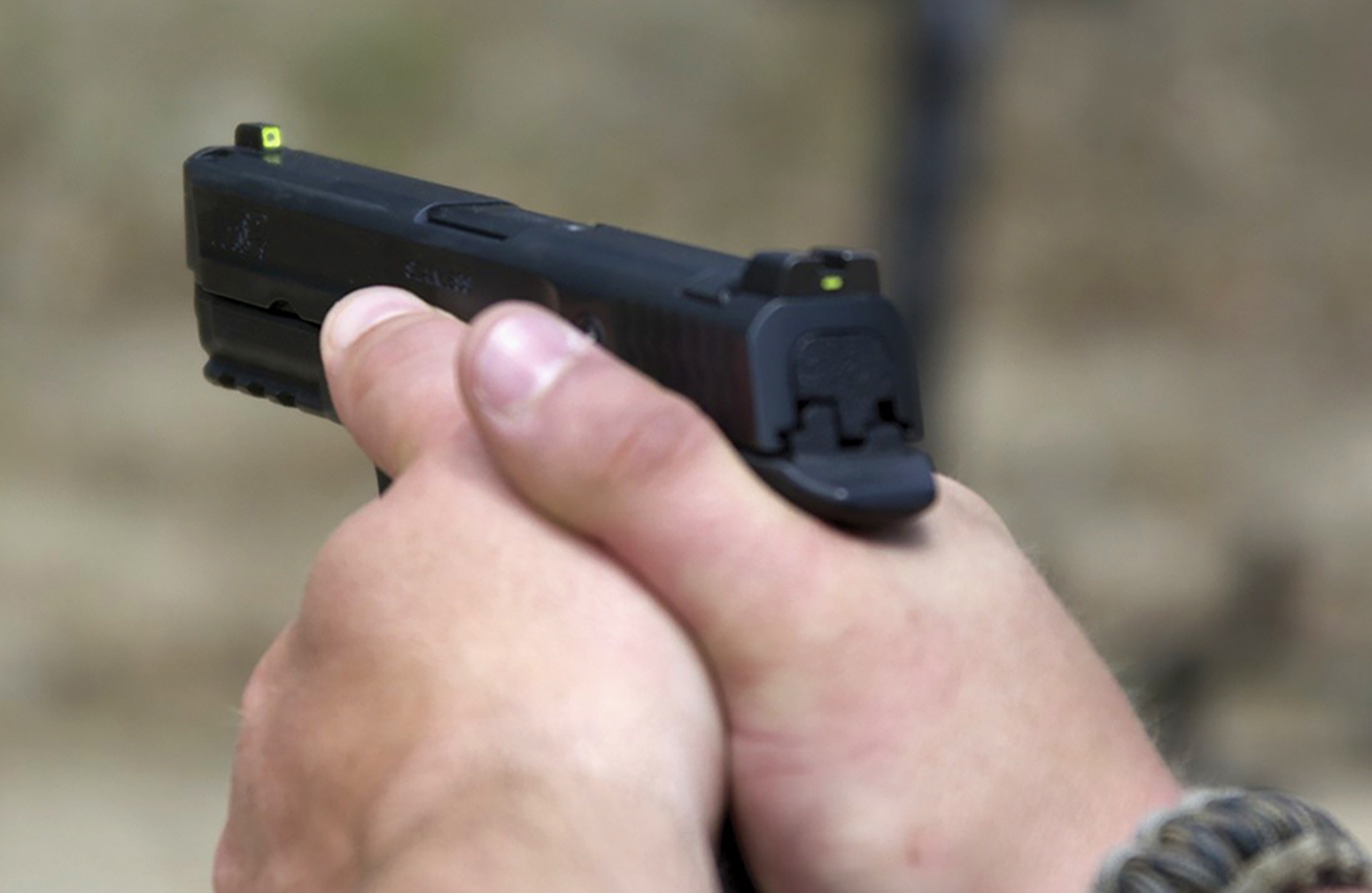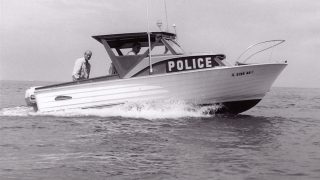
No matter what some people believe, there are no miraculous gadgets or gizmos that can replace skill acquired through intentional practice and quality training. However, there are some things officers can purchase that may improve their ability to shoot quickly and accurately. First, when evaluating any new product or gear, we need to consider whether the new piece of equipment solves an existing problem or is a true improvement. If not, why bother?
New equipment requires more time training to ensure it meets our needs and can withstand our operational environment. The second thing we should consider is whether it’s proven under real-world conditions. I don’t know about you, but I don’t have the time or money to wring out new gear every week.
Changing from the standard three-dot sight setup to a pair of quality high-visibility sights can offer a tremendous advantage to officers, and there are many quality options available. High-visibility sights are available in a variety of configurations and colors to help officers acquire their sights more quickly. Especially for those of us who measure their experience in decades rather than years, high-visibility sights can help us focus on our sight picture, leading to more accurate shots.
The “why”
I have had the pleasure of using several different brands of high-visibility sights on my Smith & Wesson M&P 9mm duty weapon, as well as several of my Glock pistols. After tens of thousands of rounds, I know high-visibility sights are worthy additions to your duty pistol. In fact, I would argue this is the single best aftermarket addition to a duty handgun.
It’s immediately evident why high-visibility sights are so effective on a duty handgun. They are very bright! I don’t mean “don’t-look-directly-at-the-sun” bright. I mean they are extremely easy to see and track during recoil. The ability to rapidly acquire an adequate sight picture significantly increases our ability to deliver accurate shots quickly. Instead of the traditional black-and-white dot arrangement, the addition of bright colors on the front sight draws the shooter’s visual focus. Rather than searching for the front sight, the bright color superimposed over the intended target really speeds up the sighting process.
At the most basic level, our eyes have photoreceptor cells called cones and rods that sense different light wavelengths. Under normal lighting conditions, our eyes rely mostly on the cones, which quickly pick up green light, followed by yellow light. In low-light conditions, the rods take over and yellow becomes the most visible color in the light spectrum. High-visibility sights are available in a variety of colors, including green, yellow and the most popular color choice, bright orange.

Youth has no age
Way back when, during my first handgun training class, one of the instructors had a black rear sight and a front sight painted bright orange. When I asked him about his sights, he told me that as he got older, it became increasingly difficult to see his front sight. The bright orange helped him see his sights faster and maintain visual focus on his front sight during recoil.
This is a common condition as shooters get older. Many officers first notice their eyesight changing in their early 40s. Suddenly, the printing on packaging gets smaller and more light is needed to read comfortably. As we age, the lenses of our eyes begin losing elasticity, becoming less flexible. This condition, known as presbyopia, results in a reduction or loss of the ability to focus on close-range objects, such as pistol sights. Unfortunately, shooting a handgun accurately requires us to focus on the front sight while simultaneously seeing the rear sight and the target in sufficient detail. Now that my eyesight has changed with age, I have gained more appreciation for high-visibility sights.
High-visibility sights offer the same advantages for shooters who haven’t yet experienced age-related visual changes. Regardless of age, we need to see the front sight superimposed over the desired point of impact. This is critical to making successful hits on our target area. This ability to rapidly acquire a visual focus on the sights means more time can be taken to shoot well. Additionally, we need sights that are visible even under less-than-perfect conditions, including low-light conditions. High-visibility sights offer these advantages to all shooters.
Sight upgrades
Handgun manufacturers have improved the visibility of their factory sight options. The new Glock Bold Sights available on the Glock Gen 5 pistols are an example of a manufacturer upgrading its options. But the aftermarket continues to offer a wider variety of high-visibility sights for duty handguns than any manufacturer. To fit the needs and preferences of different shooters, different shapes, heights, widths, colors and materials offer a variety of advantages.
Personally, I prefer black rear sights and a brightly colored front sight. I’m not a fan of the traditional three-white-dot setup, and I don’t care one way or the other about tritium night sights. On the other hand, I know many officers like night sights and want rear sights with some type of alignment indicator. Sights on a handgun are a matter of individual needs and preferences.
If you’re looking to upgrade the sights on your duty handgun, sights capable of enduring the abuse of duty work are required. They must be rugged and designed for combat environments. For example, an angled rear sight that doesn’t lend itself to doing one-handed reloads would not be the best choice for duty use. Another problem is sights that are too easily adjustable. Adjustable target sights are great for shooting bullseyes, but officers require sights that don’t move easily and hold their zero under hard use.
Fragile sights that rely on replaceable fiber-optic rods are a no-go for duty use. Fiber-optic sights are good at capturing light and are available in a variety of bright colors to attract the shooter’s eyes; however, most fiber-optic sights are vulnerable to chemical solvents, dirt and the abuse of police work. These environmental factors can degrade the functionality of the fiber optics. This has been addressed by some manufacturers with the use of nonreplaceable fiber optics built into a protective case that protects the fiber-optic tube from the abuses of police work.
Pistol-mounted optics
Pistol-mounted optics are the ultimate sight upgrade for duty use. Duty-ready pistol optics have proven themselves reliable and rugged. Battery life for duty-capable optics is now a nonissue, with some models’ battery life easily exceeding a year of continuous use. For many officers, being able to stay target-focused makes for better threat assessment and target identification. And for those officers who are getting older, focusing on objects in the distance may mean not being able to see at arm’s length. In other words, if we can see the threat, we may not be able to see our front sight. A pistol-mounted optic allows shooters to stay threat-focused, see their sight and place accurate shots on target if needed.
As pistol-mounted optics become more common in law enforcement, many officers will find they are much more accurate, track their sights better through recoil and are able to place accurate shots on target much faster compared to traditional iron sights. Another benefit of pistol-mounted optics is that they can help officers self-diagnose and self-correct their own marksmanship errors during training, which can lead to skill improvement.
There is no magic widget that can turn a poor shooter into an all-star. In the end, the recipe includes practice, a solid work ethic and a desire to improve. However, being able to see your sight system better can help you along the path to improvement. Before you make any changes, know your department policy, use high-quality duty-ready gear and get good training to make the best use of your equipment.
As seen in the January 2022 issue of American Police Beat magazine.
Don’t miss out on another issue today! Click below:






